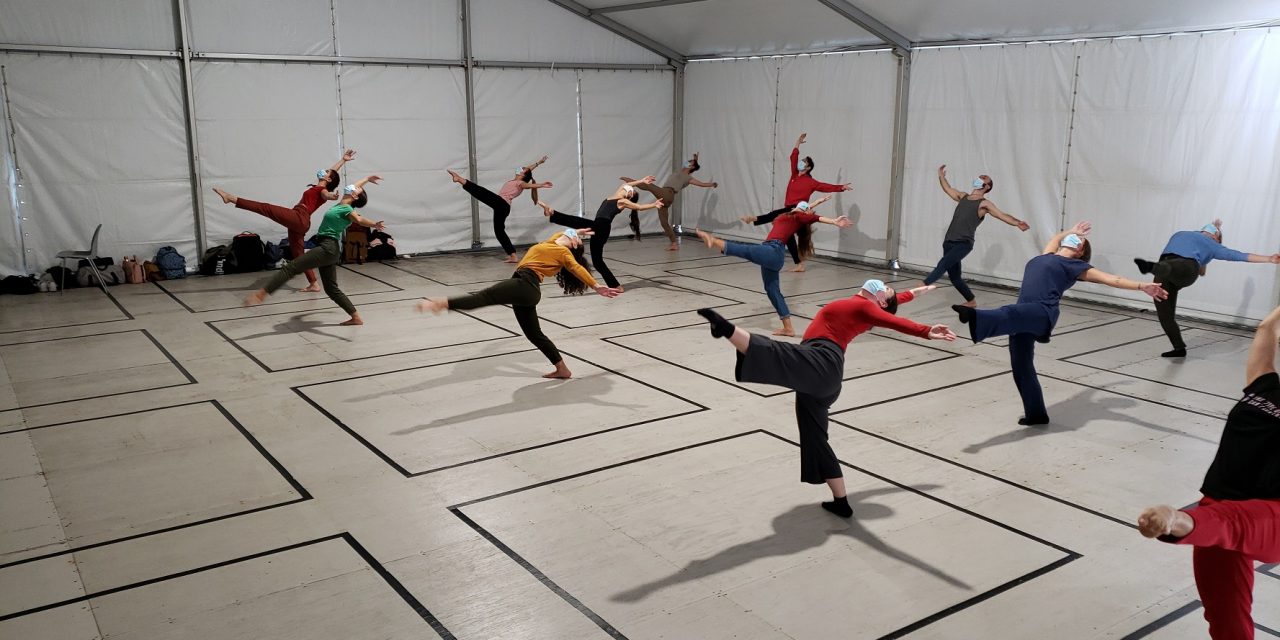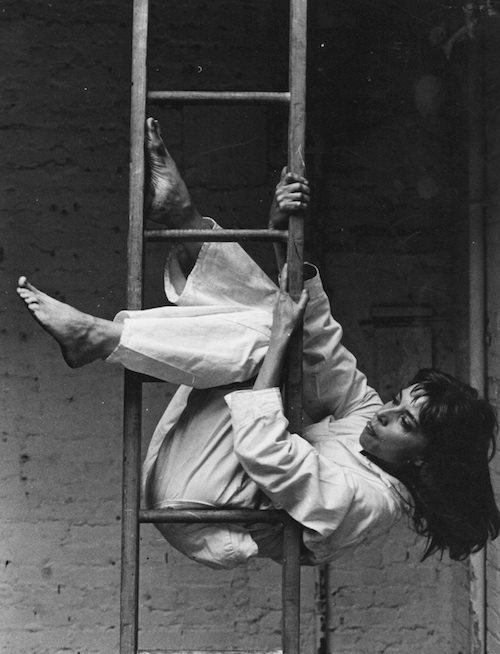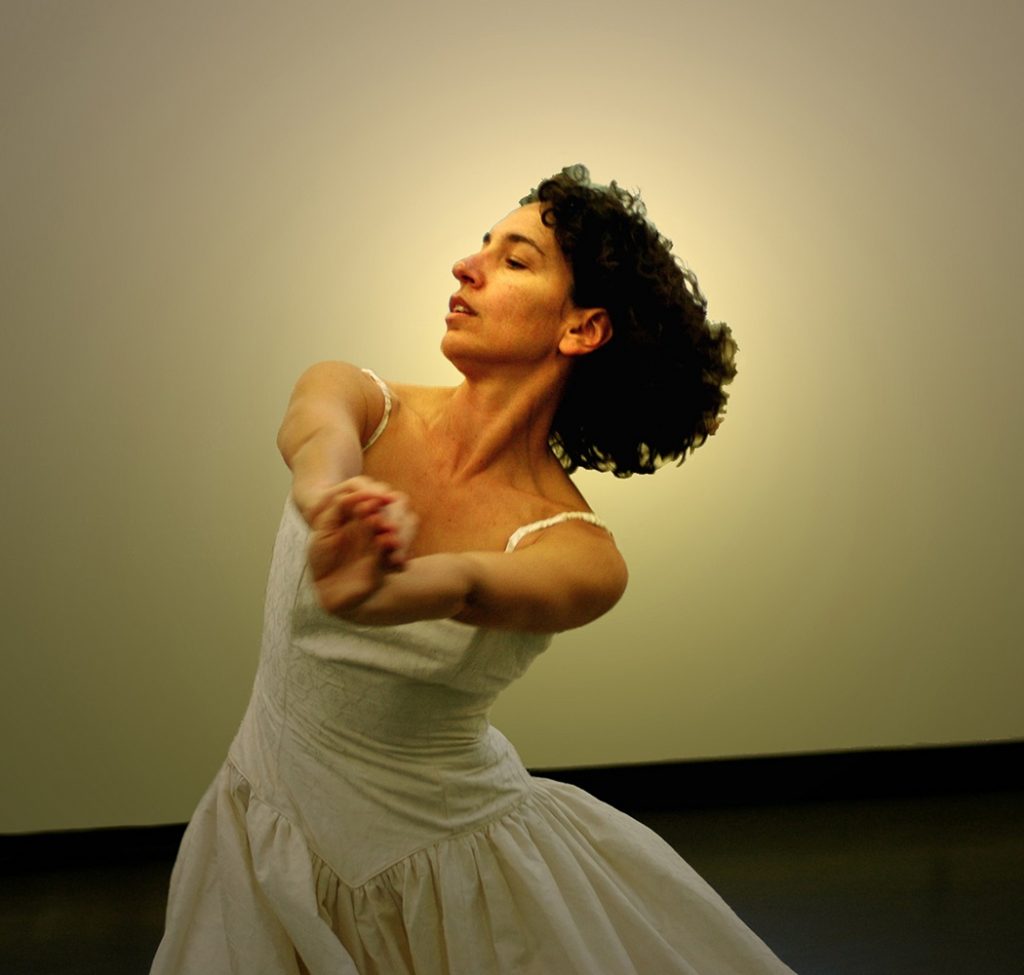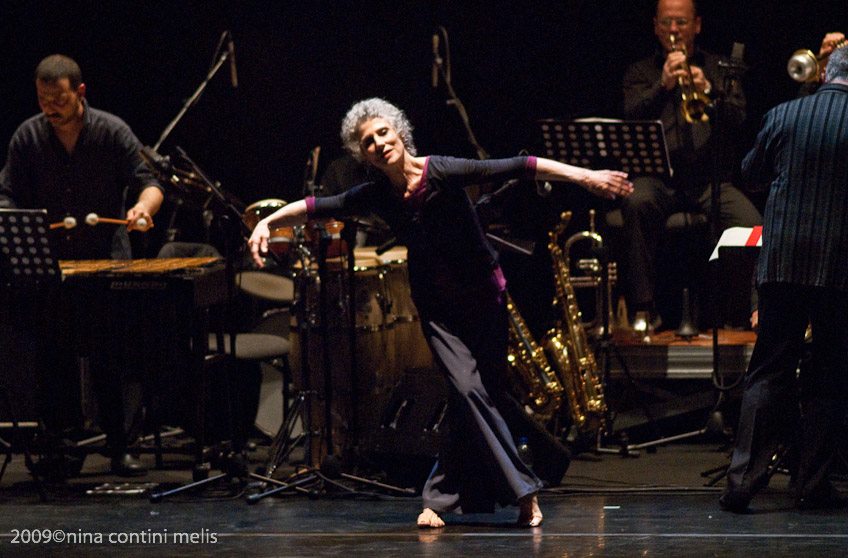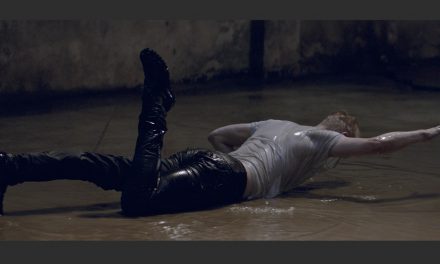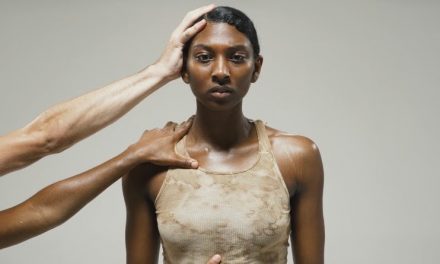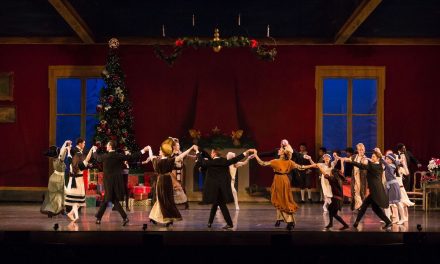In her will, Viola Farber left me her entire estate, which includes ownership of her choreography and her archival materials. Since her death in 1997, I have re-staged just two of Farber’s works: Tendency (1971) a duet for Farber and me commissioned by Repertory Dance Theater in Salt Lake City, Utah, and Clearing (1979), a solo choreographed for New York dancer/choreographer Ze’eva Cohen re-staged for the Nancy Evans Dance Theatre in Pasadena. So, it was unexpected when Roberta Escamilla Garrison contacted me last year about re-staging one or two of Farber’s dances for students enrolled in a master’s degree course called American Historical Project. It was a course created by the head of the Contemporary Dance Department, Dino Vergaat, the Accademica Nazionale di Danza, Roma (AND).
Garrison moved to New York City in 1966. While studying dance with Dan Wagoner and Viola Farber, she was selected to perform in a project headed by Cunningham Company member Marilyn Wood and postmodern dancer/choreographer Elaine Summers. Summers was a founding member of the Judson Dance Theater, and well known for combining dance and film. Garrison went on to perform with Elaine Summers & Film Company and was soon immersed in this post-modern dance scene.
“But it was always Cunningham,” she said. “everywhere I went. Elaine did this piece in MOMA called Energy Changes and Carolyn Brown was there and came up to me afterwards and said ‘Oh, you’re such a wonderful dancer! Please come and do my workshop.’” Garrison then attended a Cunningham performance at the Whitney Museum which included his work Crises (1960) with the original cast Carolyn Brown, Merce Cunningham, Judith Dunn, Viola Farber, and Marilyn Wood. The music was Rhythm Studies for player piano by composer Conlon Nancarrow and the costume designer was Robert Rauschenberg.
“When Judith Dunn was with musician Bill Dixon,” Garrison said. “she brought a piece down to the Riverside Church.” Dunn had collaborated on this work with Dixon and a group of jazz musicians. When Garrison saw the musicians enter onstage from the wings, she said to herself “This is what I want to do.” She was married to the very well-known jazz musician, Jimmy Garrison, and as stated in her bio: “she breathed the electrifying atmosphere of the New York Jazz scene and the Judson Church.”
“So, I had this incredible connection,” Garrison said. “which started with you!” She reminded me that we first met when she took Cunningham Technique classes with me at the New Dance Group in New York City back in the early 1970s. My classes were then taken over by a wonderful dancer/choreographer/educator, Dorothy Hershkowitz, who suggested that Garrison go study with Farber. She followed that advice and studied at the Viola Farber Dance Company’s studio on the corner of Broadway and Bleeker Street.
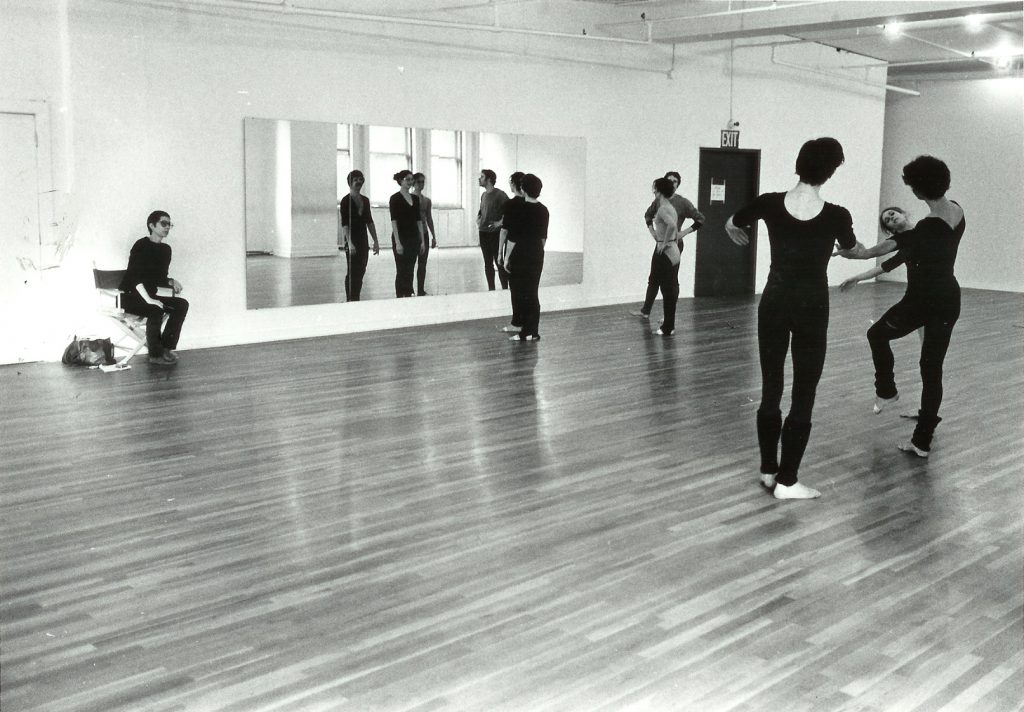
Viola Farber rehearsing company at Broadway/Bleeker Studio (1976) – (L to R) Viola Farber, Larry Clark, Anne Koren June Finch, Willi Feuer, Jeff Slayton, Susan Matheke, and Andé Peck – Photo by Chuck Osgood, courtesy of Viola Farber Estate
That studio was on the top floor of an old building. In addition to an office and dressing rooms, the studio area had an amazing dance floor built by the dancers in the company (myself included). It was 100 feet long and 50 feet deep, and because it was on the top floor, there were no support pillars, leaving the entire space open for classes and rehearsals. Farber had a curtain installed at one which created a small studio for her to work in while classes were taking place. It was an incredible studio, but sadly, after only a few years Farber lost the studio when the new landlord evicted everyone in the building and created high end living lofts.
There are two children from the marriage between James and Roberta Garrison, and each of them has followed in the career paths of their parents. Maia Claire Garrison became a dancer, joined the company of choreographer Bob Curtis at age 14, attended Sarah Lawrence College where she studied with Viola Farber and later performed with Urban Bush Women for six years and Doug Elkins. Maia went on to form her own company, M’zawa Danz, and now teaches at Barefoot Dance Center in West Park, New York founded by Jessie Levey, daughter of dancer Karen Levey who performed with the Paul Taylor, Dan Wagoner and Viola Farber dance companies.
Matthew Justin Garrison is an American jazz bassist who since 2011, has run ShapeShifter Lab in Brooklyn, New York, with Fortuna Sung. Described by the New York Times as “an electric bass virtuoso”, he has performed with Ornette Coleman, John Coltrane, and Herbie Hancock, among others. According to Wikipedia: “He moved to New York City in 1994 where he regularly performed and recorded with Gary Burton, Rashied Ali, Ravi Coltrane, Gil Evans Orchestra, Steve Coleman, Vernon Reid, Chaka Khan, Joni Mitchell, Joe Zawinul, The Saturday Night Live Band, John McLaughlin, John Scofield, Mike Stern, and Wayne Krantz. His 2000 debut album, Matthew Garrison, was described by Bass Player magazine as having “raised the bar” for electric bass players. He is considered one of the most technically gifted jazz musicians of his generation. In 2010, Garrison toured with R&B singer Whitney Houston during her Nothing but Love World Tour.”
When Roberta Garrison first contacted me about re-staging works by Farber for students at the Academy in Rome, I immediately thought of my friend and colleague Sarah Swenson who recently married an Italian musician/composer, Alessandro Girasoli, and now lives in Italy. I emailed Swenson and gave her Garrison’s contact information and was thrilled to later learn that the two had met and became instant friends. Swenson had also agreed to help Garrison re-stage Farber’s Sunday Afternoon and Double Walk, two dances that I felt would work for these young student dancers. Swenson had never studied with Farber, but she had taken classes with me and performed in a work of mine as an MFA Candidate at California State University, Long Beach. She later founded Vox Dance Theater and commissioned two works by me, Inventory and Crossings. Swenson was also my rehearsal assistant when I choreographed Tribute at what is now known as The Wooden Floor in Santa Ana, CA.
While Garrison and I were talking about Swenson, the name Simone Forti came up, a choreographer and performance artist who Swenson works closely with. Garrison related that while living in New York, she had a loft at 61 Crosby Street between Spring and Broome streets, just around the corner from the building where Forti, Trisha Brown and Elaine Summers had lofts. It was in this loft that many well-known postmodern choreographers and dancers rehearsed, and she organized performances for dancers and jazz musicians. “I always loved working with live musicians.” Garrison said. “I only made one piece to recorded music that was based on blues.”
Knowing that it was probably a long story, I wanted to know how Garrison found her way from New York City to Rome.
Friends of hers had a connection to the Italian television station RAI, a reporter who traveled to New York scouting out interesting artists to be featured on RAI. They suggested that she take a look at Garrison’s work. She was then invited to attend what Garrison called her “Tuesday Salon” where she invited dancers and musicians over to her loft to jam together and then have dinner she had prepared. Later, a crew from RAI TV recorded Garrison and her family, along with a duet that she performed with musician Dave Burrel. The journalist’s boyfriend said to her that no one in Italy was doing what she was doing, and that she should go there right away. The reporter for the RAI TV project was the famous Italian-American actress, author, philanthropist, and former model Isabella Rossellini. As fate would have it, Garrison was invited to perform at a Jazz festival in Italy with the internationally acclaimed Jazz vocalist Jay Clayton and the famous Italian saxophonist, Maurizio Giammarco.
“So that is how I got here,” she said. “The music takes me to the dance and the dance takes me to the music.”
“I asked Jay Clayton who should I call.” Garrison continued. “She said to call Alvin Curran, the American composer, performer, improviser, sound artist and writer who now lives in Rome.” She did and he directed her to Elsa Piperno and Joseph Fontano, the founders of Danza Contemporanea di Roma, the first contemporary dance school in Rome. When Garrison told them that she had studied with Farber and Wagoner, they immediately arranged for her to teach a class at their school, inviting everyone from the dance community in Rome to attend. The class was a success and that was how she came to perform with Danza Contemporanea and to teach at the AND in Rome. This was in 1979.
After settling in Italy Garrison began working even more closely with Jazz. In 1981, she presented the evening work Everyday Company, which soon became the name of her company. The Everyday Company has participated in numerous dance festivals around Italy and throughout Europe. By introducing her fusion of Cunningham and Farber techniques, Garrison has helped form an entire new generation of Italian dancers. She hired former Farber company member, Andé Peck, to teach in Rome where he lived for several years.
Garrison has been a guest teacher at the Centro Internazionale di Danza and in 1988 she founded the Dance Department at St. Stephen’s School. At the beginning of 1990, Everyday Company joined forces with Aurelio Gatti’s Mimo Danza Alternativa to create MDA Produzioni Danza. The last courses that Garrison taught at the AND were in 2018, a Master in Improvisation for musicians and dancers and in 2020 the workshop on the choreographic repertoire of Elaine Summers and Viola Farber.
So, why now? What inspired Garrison to contact me to inquire about re-staging Farber’s work on students at the AND?
Garrison said that she had wanted to have Farber come to Italy from the time she began teaching and working in Rome, but that for one reason or another, it never happened. Skip ahead in time, a former student of hers, Dino Verga, studied Cunningham technique in New York, returned to Rome, founded his own company, and later took on the position as Chair of the Contemporary Dance Department at the AND.
Verga had hired Garrison to teach a course in the master’s degree program that included dance and music improvisation. This year he decided that the course would focus on historical dance. A Cunningham work had been taught to students there by former company member Suzanna Hayman-Chaffey, so Verga turned to Garrison to find work from that same era. The decision was easy for her, Farber and Summers. She made the decision to re-stage Summers’ Theater Piece for Chairs and Ladders (1965), and Farber’s Sunday Afternoon (1976) and Doublewalk (1978).
With the aid of my partner Martin Holman, we emailed Garrison video links for her to download a copy of both works. Swenson received the same links as Garrison had hired her to assist in the re-staging. The plan was for the students to learn the three dances and to have an informal studio performance.
But then the pandemic outbreak altered everyone’s plans. For weeks everything was put on hold with the possibility of being cancelled. Garrison and Swenson, however, refused to let that happen and came up with a way to teach movement from the dances while strictly adhering to the Italian government’s safety guidelines of wearing a mask and maintaining physical distancing.
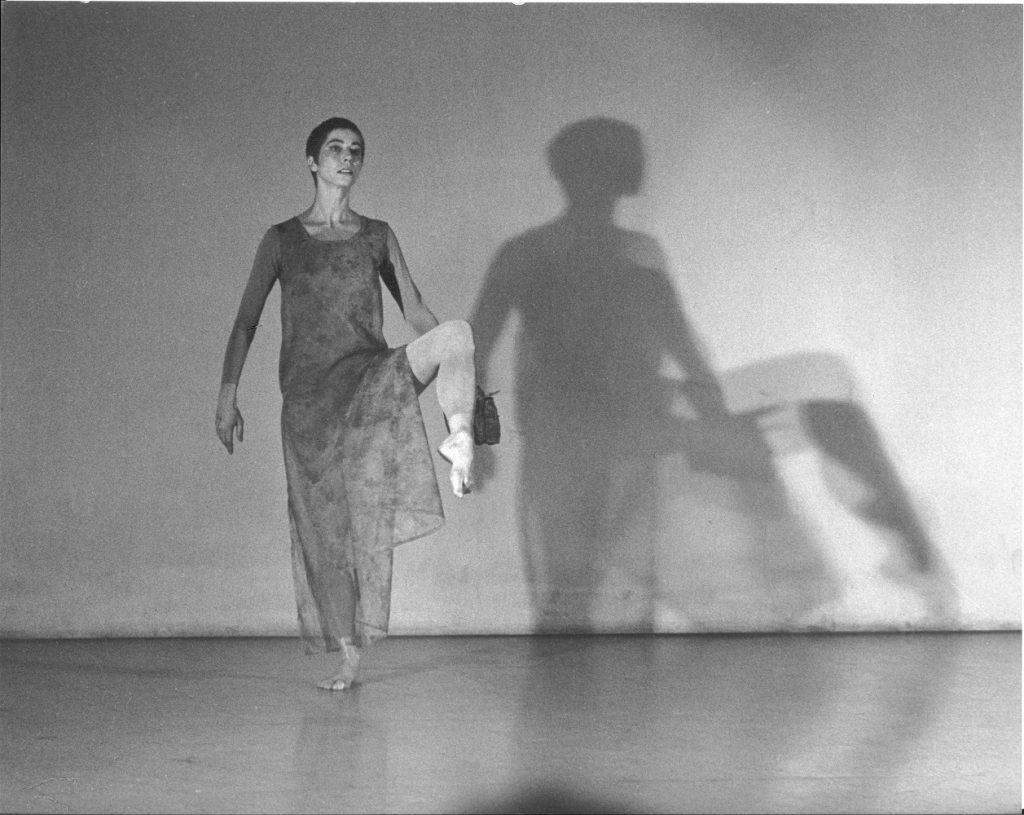
Viola Farber performing “Legacy” (1968) at Judson Church – Photo by Theresa King, courtesy of the Viola Farber Estate.
It is still unknown what will happen to this project once it is safe for everyone to work together and actually interact physically. It is in the hands of those in charge at the AND. Swenson is in the midst of writing a detailed account of the process of the workshop at the Accademica Nazionale di Danza, Roma for LADC that will include photos, and there will eventually be a link to a video of the event. I will therefore not go into all those details for this article.
I want to thank Roberta Escamilla Garrison, the Accademica Nazionale di Danza, Roma, and Sarah Swenson for the hard work that they put into getting a bit of Viola Farber’s work to Italy and into the bodies of another generation of dancers. I would also like to thank and congratulate the dancers for their beautiful performance of Sunday Afternoon in 15 Squares. There, I have provided you with the teaser for Swenson’s article.
To watch a wonderful video of excerpts of Roberta Garrison’s work, click HERE. For an excerpt of another dance by Garrison, click HERE.
Written by Jeff Slayton for LA Dance Chronicle.
Featured image: Dance students at the Accademica Nazionale di Danza, Roma rehearsing phrases from Sunday Afternoon (1976) by Viola Farber (1931-1997) – Photo by Sarah Swenson

